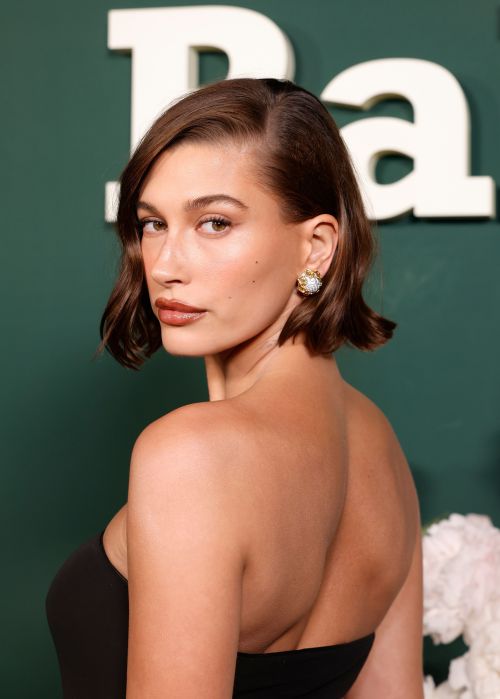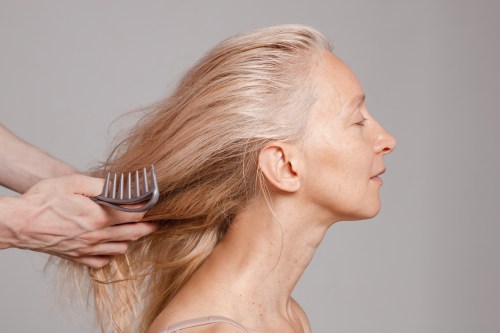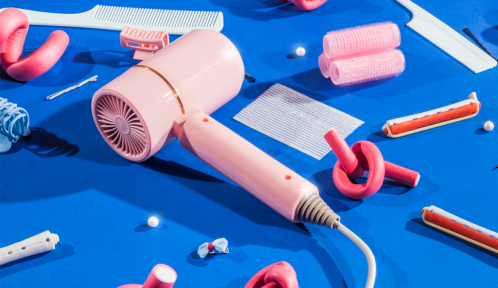How I survived a hair-destroying “chemical cut”—and how to make sure you never get one
How I survived a "chemical cut" and the hair breakage that resulted—and how to make sure your colorist doesn't make the same mistake mine did.

When you move to New York City, there are a lot of sticker-shock moments, the top three being rent, rent, and rent. Number four, of course, is: broker’s fee. (Non-New Yorkers, Google it and weep for us.)
But for me, the most surprising torpedo to my wallet was hair care. For a highlights-and-haircut combo in any half-decent place, it cost nearly twice what I was paying back home in Dallas at one of the best salons in the city. So when I moved my home base upstate to the Catskills a couple years ago, I was really excited to get that sweet, sweet budget balayage again.
And at first, it was everything I hoped. But in the last few months I noticed the top of my hair, where most of the highlights were, seemed thinner than the hair underneath—and those top sections had ends that tended to frizz out no matter how I styled it. I didn’t recognize it, because in 20 years of getting highlights this had never happened to me, but these were classic signs of hair breakage. As in, when your locks just break off at random spots because they’ve gotten so damaged. (Gasp.)
I was alerted to the problem by a NYC colorist who fit me in while I was blizzard-bound in the city a few weeks ago (and desperately in need of roots help). I pointed out what I naively thought were “baby hairs” growing in (oh the optimism), and she just shook her head as she ran her fingers through my overprocessed tresses—and explained that it was breaking off, not growing in. “Yeah, no. You’ve got what we call a chemical cut.” Ouch.
So, what is a chemical cut?
By giving me some strategic layers to clean up the ends and adding an Olaplex treatment, which helps to strengthen hair even as you’re adding new highlights or balayage, my Brooklyn stylist was able to minimize the damage and take me out of tragic blond territory.
But the “chemical cut” thing haunts me—how does this happen? And how could I have avoided this? (And will I ever be able to trust a hair “bargain” again? Not likely.)
“Chemical cut is a kind of almost sarcastic industry term. It’s used in a way that, as stylists, we say it to one another as a worst-case scenario description,” says Whiteroom Brooklyn founder Elisabeth Lovell, an expert on hair color (but not the Brooklyn colorist who fixed me up).
Lovell says breakage is just one of the dangers of lightening your hair—something a conscientious hairstylist will work hard to avoid.
“Unfortunately the process of highlighting hair can never be exactly the same every time. Because you are selecting small sections of hair, there is inevitable overlap of color on already lightened hair, which will cause the overprocessed hair to eventually give out and break,” she explains.
The right way to do highlights and balayage
Colorists avoid the dreaded chemical cut in a few ways, Lovell says. Most important is limiting the amount of color overlap that’s happening, AKA trying not to put bleach on areas of the head that are already light.
“Also, managing expectations with the client about how light their hair can be. There is a trend right now where people want very ashy, very light hair, and the process to get them there is often very stressful for the hair. And if the hair is already weak, it may not survive,” she says.
Lovell also called out Olaplex as something your colorist can add to the bleach for what’s known as a “bond protector,” to keep hair strong through the coloring process. But she warns, “Bond protectors help but they aren’t the cure-all that many of them claim to be.”
Better to work with your natural shade and lighten cautiously, Lovell says, while also being conservative about how often you get your roots touched up.
How to tell if your colorist knows what’s up, breakage-wise
When working with a new hairstylist, Lovell advises getting a conversation going about the health of your hair as soon as you sit in the chair.
“They should let you know any areas that they feel might seem compromised and let you know what their plan is for keeping your hair healthy as well as what you can do in between appointments to help your hair strong and less likely to break,” she says. “Are you more interested in long, super healthy hair, or being platinum? It’s often then case that you have to choose one or the other.”
Sign Up for Our Daily Newsletter
Get all the latest in wellness, trends, food, fitness, beauty, and more delivered right to your inbox.
Got it, you've been added to our email list.










